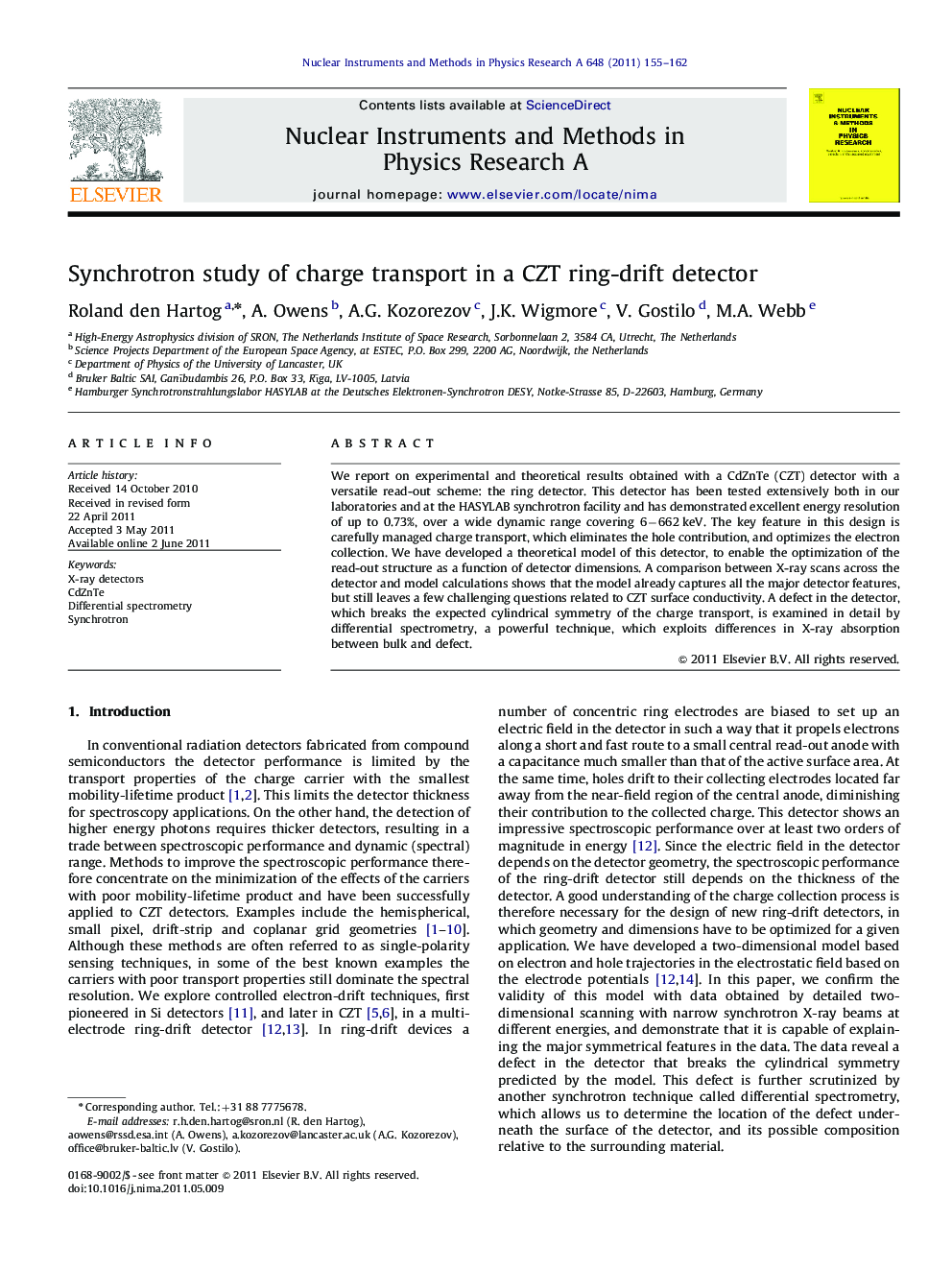| Article ID | Journal | Published Year | Pages | File Type |
|---|---|---|---|---|
| 10715731 | Nuclear Instruments and Methods in Physics Research Section A: Accelerators, Spectrometers, Detectors and Associated Equipment | 2011 | 8 Pages |
Abstract
We report on experimental and theoretical results obtained with a CdZnTe (CZT) detector with a versatile read-out scheme: the ring detector. This detector has been tested extensively both in our laboratories and at the HASYLAB synchrotron facility and has demonstrated excellent energy resolution of up to 0.73%, over a wide dynamic range covering 6â662Â keV. The key feature in this design is carefully managed charge transport, which eliminates the hole contribution, and optimizes the electron collection. We have developed a theoretical model of this detector, to enable the optimization of the read-out structure as a function of detector dimensions. A comparison between X-ray scans across the detector and model calculations shows that the model already captures all the major detector features, but still leaves a few challenging questions related to CZT surface conductivity. A defect in the detector, which breaks the expected cylindrical symmetry of the charge transport, is examined in detail by differential spectrometry, a powerful technique, which exploits differences in X-ray absorption between bulk and defect.
Keywords
Related Topics
Physical Sciences and Engineering
Physics and Astronomy
Instrumentation
Authors
Roland den Hartog, A. Owens, A.G. Kozorezov, J.K. Wigmore, V. Gostilo, M.A. Webb,
